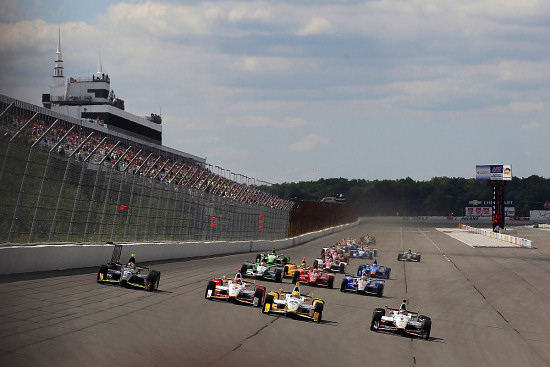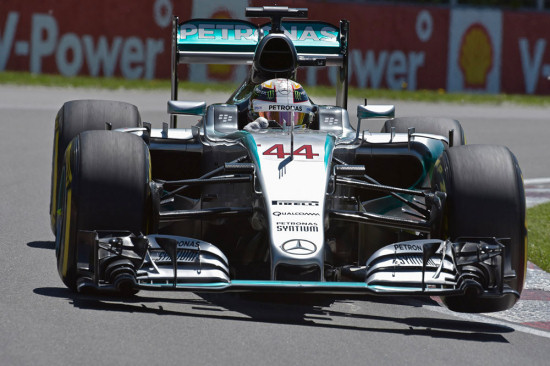More wise words from Nigel Bennettby Gordon Kirby |
 A few weeks ago in this space former Indy car designers Nigel Bennett and Bruce Ashmore discussed their ideas for making today's Indy cars a little safer. Bennett and Ashmore engaged in some very sensible discussion about improving cockpit safety and making a better job of fastening noses and the myriad bodywork pieces to the cars.
A few weeks ago in this space former Indy car designers Nigel Bennett and Bruce Ashmore discussed their ideas for making today's Indy cars a little safer. Bennett and Ashmore engaged in some very sensible discussion about improving cockpit safety and making a better job of fastening noses and the myriad bodywork pieces to the cars.
Ashmore raised some salient points, the first about the need for Dallara to improve the way the noses are attached to its Indy cars. He also addressed the larger picture of the rear wheel pods and other body parts that we saw bouncing down the track far too many times this year amid accidents on ovals, road courses and street circuits. Many such as Bennett and Ashmore predicted that this year's aero kits would result in the cars running closer together than ever and the prediction came true on all types of tracks. In such an environment multi-car accidents are inevitable and potentially ruinous on big ovals in particular with lots of debris flying around from the numerous aero kit bodywork pieces. If IndyCar hopes to move forward it needs not only a more aesthetically pleasing car but also one with more cohesive, crash-resistant bodywork. In fact, these two goals are inextricably interconnected.  © LAT USA Both Bennett and Gordon Murray have proposed ways of achieving these goals and this week Bennett expands on his ideas for reducing tire grip and downforce in both Formula 1 and Indy cars. Nigel begins with a concise review of what he sees as IndyCar's biggest problems. "You have to start by asking how to stop dangerous pack racing on high speed ovals," Bennett remarks. "It's very simple. Supply harder compounds or narrower tires. Or both. Cornering grip would be reduced and narrower tires would make for higher top speeds. Thus driver skill would come more into the equation. "And as Bruce pointed out so well a few weeks ago, get rid of all those appendages which litter the track in accidents. And make bolt-on nose cones which stay attached in multiple impacts, not quick release noses." As far as Formula 1 is concerned, Bennett believes they're heading in the wrong direction. He's convinced the right way forward is to reduce downforce, including going to much simpler front wings, and by making some radical changes in tire sizes. "Personally I think the idea of wanting F1 cars to go five seconds a lap faster is madness. They would be chasing their tails on circuit safety. Big changes would surely have to follow. "Speed is not the be all and end all. I would reduce the downforce, which would increase the slip angles and make the cars harder to drive and give spectators more to watch and appreciate the drivers' skills. "The big problem with F1--apart from ludicrous costs--is the rule about weight distribution, which says the loaded car in qualifying must have not less than 45.9 percent of its weight on the front axle. "In contrast, Indy cars in the eighties and nineties weren't regulated. Typically, they had about 43 percent of the weight on the front to suit best the tire sizes provided. If you go back to the Lotus 72, it was more like 30 percent!  © Gary Gold "So my suggestion is to free up the weight distribution, to regulate the tire sizes (bigger on the rear, smaller on the front), and regulate those stupid front wings in width and complication. A smaller front tire would increase braking distances in itself, allowing more overtaking opportunity. "Also, the underbody of an F1 car should be made much more effective depending on how fast they want to go 'round corners. That can be achieved by reducing the required flat area and allowing bigger diffuser volume and some lead in at the front. "Think about it. If the front aero load was only let's say percent, and half of that was from the front wing, damaging turbulence would have far less effect on both balance and total downforce." So there you are. Some very concise, clear thinking from an old hand at designing and engineering Formula 1 and Indy cars as well as tires. Bennett knows his stuff. Surely it would be healthy for both F1 and IndyCar to listen to the man and his ideas. |
|
Auto Racing ~ Gordon Kirby
Copyright ~ All Rights Reserved |
